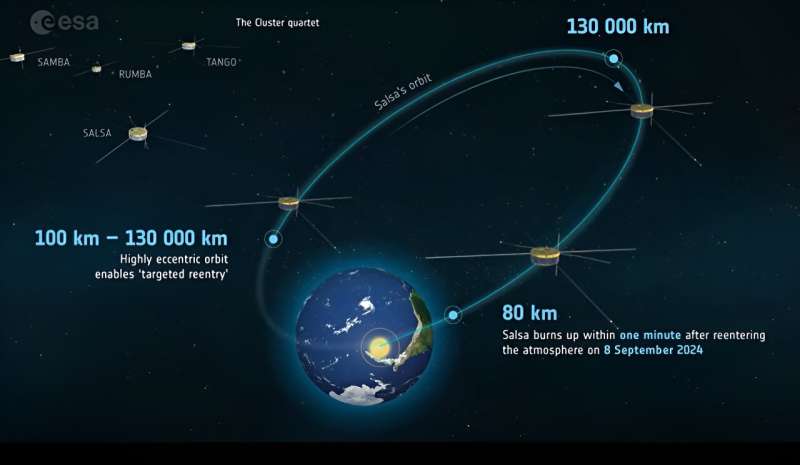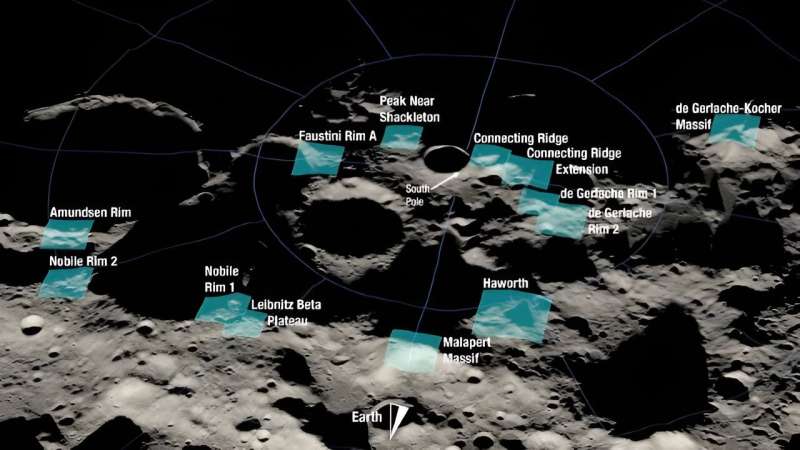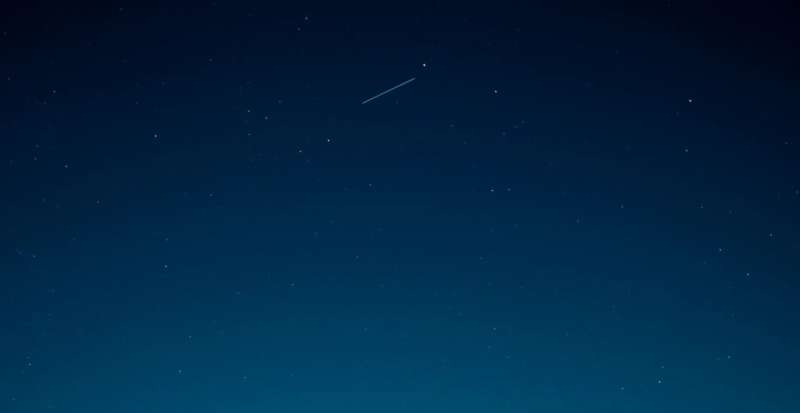
Copernical Team
UAlbany physicists highlight ongoing progress in dark matter search
 Physicists at the University at Albany celebrated the latest advancements in the search for direct evidence of dark matter on Monday, as new findings from the LUX-ZEPLIN (LZ) project were presented at two scientific conferences. Dark matter is thought to be a massive, yet unseen, component of the universe's structure.
The LUX-ZEPLIN detector, known as the most sensitive dark matter detecto
Physicists at the University at Albany celebrated the latest advancements in the search for direct evidence of dark matter on Monday, as new findings from the LUX-ZEPLIN (LZ) project were presented at two scientific conferences. Dark matter is thought to be a massive, yet unseen, component of the universe's structure.
The LUX-ZEPLIN detector, known as the most sensitive dark matter detecto NASA's carbon nanotube technology aids search for life on exoplanets
 NASA's development of a carbon nanotube material is poised to significantly enhance the search for exoplanets, some of which may harbor life. Originally devised in 2007 by a team led by John Hagopian and Stephanie Getty at NASA's Goddard Space Flight Center, this carbon nanotube technology is now being refined for potential use on NASA's upcoming Habitable Worlds Observatory (HWO). HWO will be t
NASA's development of a carbon nanotube material is poised to significantly enhance the search for exoplanets, some of which may harbor life. Originally devised in 2007 by a team led by John Hagopian and Stephanie Getty at NASA's Goddard Space Flight Center, this carbon nanotube technology is now being refined for potential use on NASA's upcoming Habitable Worlds Observatory (HWO). HWO will be t Major leap for nuclear clock paves way for ultraprecise timekeeping
 The world keeps time with the ticks of atomic clocks, but a new type of clock under development - a nuclear clock - could revolutionize how we measure time and probe fundamental physics.
An international research team led by scientists at JILA, a joint institute of the National Institute of Standards and Technology (NIST) and the University of Colorado Boulder, has demonstrated key element
The world keeps time with the ticks of atomic clocks, but a new type of clock under development - a nuclear clock - could revolutionize how we measure time and probe fundamental physics.
An international research team led by scientists at JILA, a joint institute of the National Institute of Standards and Technology (NIST) and the University of Colorado Boulder, has demonstrated key element China expands global partnerships for Lunar Research Station
 China's initiative to establish an international lunar research station has attracted new international partners, marking a significant step in global space collaboration.
At the opening of a two-day space conference in Tunxi, Anhui Province, on Thursday, the China National Space Administration (CNSA) signed a cooperation agreement with Senegal on the International Lunar Research Station (
China's initiative to establish an international lunar research station has attracted new international partners, marking a significant step in global space collaboration.
At the opening of a two-day space conference in Tunxi, Anhui Province, on Thursday, the China National Space Administration (CNSA) signed a cooperation agreement with Senegal on the International Lunar Research Station ( SpaceX successfully launches all-civilian crew for historic private spacewalk
 SpaceX successfully launched the Polaris Dawn mission early Tuesday morning, marking the beginning of a multiday orbital expedition featuring the first-ever spacewalk conducted by private citizens. The Falcon 9 rocket lifted off at 5:23 a.m. ET from NASA's Kennedy Space Center in Florida.
"Liftoff of Polaris Dawn!" SpaceX announced on X, along with an image of the rocket ascending into the
SpaceX successfully launched the Polaris Dawn mission early Tuesday morning, marking the beginning of a multiday orbital expedition featuring the first-ever spacewalk conducted by private citizens. The Falcon 9 rocket lifted off at 5:23 a.m. ET from NASA's Kennedy Space Center in Florida.
"Liftoff of Polaris Dawn!" SpaceX announced on X, along with an image of the rocket ascending into the The 2024 Global Methane Budget reveals alarming trends

The Global Methane Budget 2024 paints a troubling picture of the current state of global methane emissions. The new report reveals that human activities are now responsible for at least two-thirds of global methane emissions.
This marks a significant increase in human-produced methane sources over the past two decades, with emissions rising by 20%, with the fastest rise occurring over the last five years.
A smooth start to life in orbit for Sentinel-2C

Sentinel-2C has completed its important first few days in space, which saw teams on the ground working around the clock to ensure the spacecraft is ready to begin its mission.
Video: Cluster reentry explained—world's first targeted reentry

The first of four satellites that make up ESA's Cluster mission is coming safely back down to Earth, marking a brilliant end to this remarkable mission.
The satellite's orbit was tweaked back in January to target a region as far as possible from populated regions. This ensures that any spacecraft parts that survive the reentry will fall over open ocean.
During 24 years in space, Cluster has sent back precious data on how the sun interacts with Earth's magnetic field, helping us better understand and forecast potentially dangerous space weather.
With this first ever targeted reentry, Cluster goes down in history for a different reason, taking ESA well beyond international space safety standards and helping ensure the long-term sustainability of space activities.
Provided by European Space Agency
Artemis III landing sites identified using mapping and algorithm techniques

Where would be the most ideal landing site for the Artemis III crew in SpaceX's Human Landing System (HLS)? This is what a recent study submitted to Acta Astronautica, and available on the arXiv preprint server, hopes to address as an international team of scientists investigated plausible landing sites within the lunar south pole region, which comes after NASA selected 13 candidate landing regions in August 2022 and holds the potential to enable new methods in determining landing sites for future missions, as well.
Like a diamond in the sky: How to spot NASA's solar sail demo in orbit

Now that its reflective sail has deployed fully open in orbit, the Advanced Composite Solar Sail System can be seen in the night sky from many locations across the world!
Stargazers can join NASA's #SpotTheSail campaign by using the NASA app on mobile platforms to find out when the spacecraft will be visible at their location. The app, which is free to use and available on iOS and Android, provides a location-specific schedule of upcoming sighting opportunities. A built-in augmented reality tool points users to the location of the spacecraft in real time.
Can you spot the solar sail? Share your viewing experience online using the hashtag #SpotTheSail for a chance to be featured on NASA's website and social media channels.

